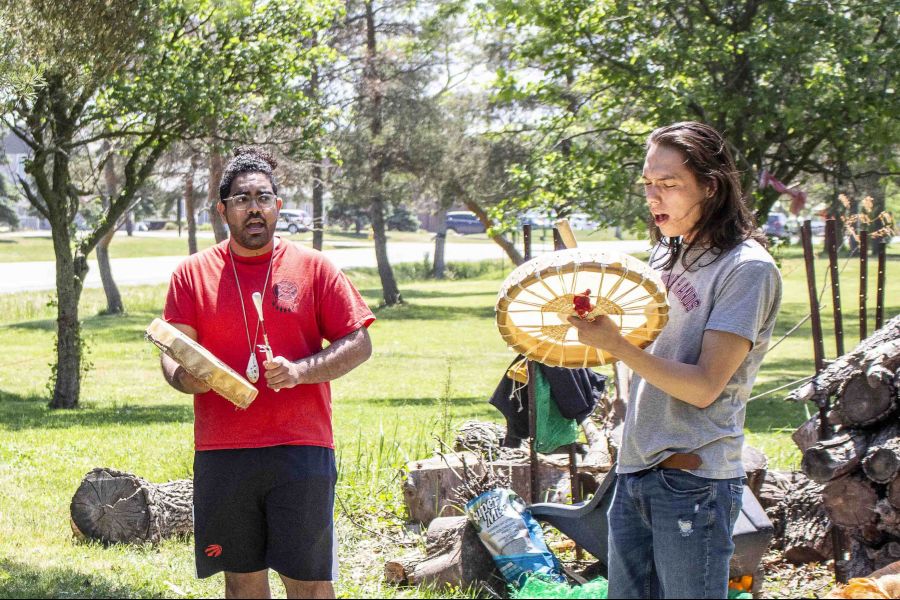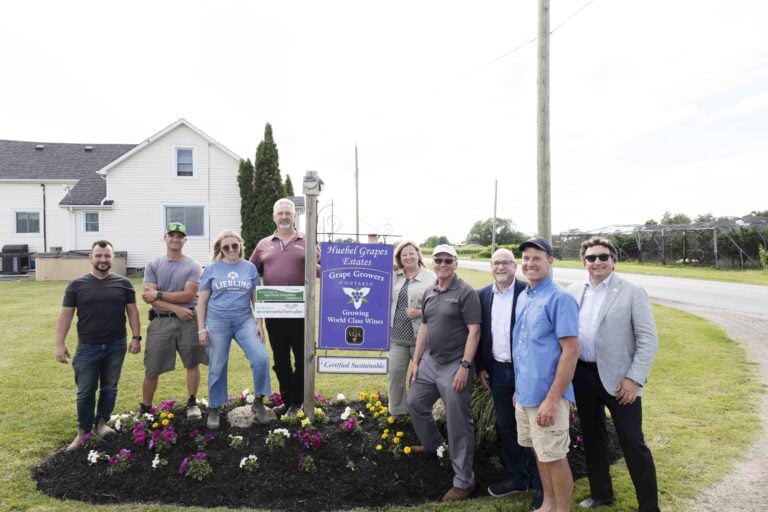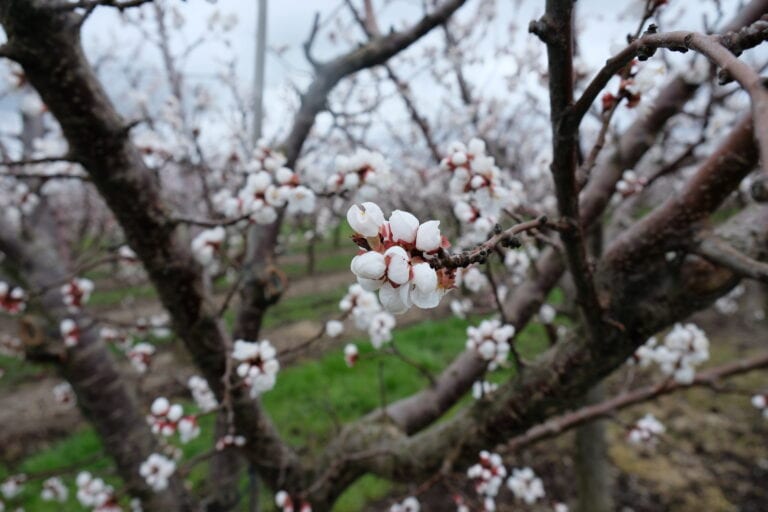Native centre helps guide spirits home after remains discovered near B.C. residential school
At five in the morning on Monday, Joe Shawana arrived at the Niagara Regional Native Centre to start a sacred fire in honour of the 215 children whose remains were found buried near the former Kamloops Indian Residential School in British Columbia.
The sombre occasion saw a small group gathered around the fire throughout the day, with people coming and going so that the centre could maintain COVID-19 safety protocols.
“We’re only doing this for the children’s spirits, because we know that spirits tend to stay when you don’t do the ceremonies you’re supposed to do to send them home,” Shawana told The Lake Report.
Shawana is the cultural resource co-ordinator at the centre on Airport Road in Niagara-on-the-Lake.
“My job is to do anything and everything with culture,” Shawana said. “I’ve had at least 50 different messages from community members asking me to host a fire for this specific reason.”
“And whenever the community asks me to do something, I do it,” he said.
The region of Niagara is the traditional lands of the Anishinaabe and Haudenosaunee Six Nations.
“Before the European settlers came, when we were still living in our villages – here in this region actually – we would wake up every day before the sun rose and go outside of our houses and give thanks for the day,” Shawana said.
A sacred fire is a tradition practiced across many Indigenous cultures. It is lit and maintained tirelessley by a fire-keeper over a full day for special occasions. If the fire needs to last longer there would be multiple fire keepers who could take turns caring for the flames.
On Monday, facing eastward, he and several others arrived early to give thanks and start the fire the moment the sun rose.
“We faced the east because we believe that all life begins in the east and ends in the west,” Shawana said.
On the west side of the fire, what Shawana referred to as the Western Door, sat a pair of children’s moccasins.
“We put them there as a symbol for – the children who didn’t make it,” he said.
The Anishinaabe believe that after death the protocols that are followed by your family are what enable you to rest peacefully and move on as a spirit. The ceremonial fire’s intent was to give the dead children’s spirits the respect they deserve to continue their journey.
“Those children didn’t have that opportunity, right? They were abused, they were abducted, they were kidnapped and taken from their homes,” Shawana said.
Residential schools were opened by the Canadian government as early as the 1870s. The government retained ownership of the schools but relied on various religious organizations to run them, notably the Roman Catholic Church.
The Roman Catholic Church operated the residential school in Kamloops where the mass grave of children’s bodies was discovered.
“Some of them were as young as three years old, man. A lot of people don’t understand the effect of how recent it was, how realistic it is. It could be as recent as a couple of generations ago,” Shawana said.
The last government-owned residential school in Canada was closed in 1996 and the last privately owned school closed the following year.
An important aspect of the ceremony is having attendees send their prayers into the fire. Sacred herbs such as tobacco, sage, cedar and sweetgrass are crumpled in the left hand, and then tossed into the flames with a spoken or internal prayer.
“The tobacco is our connection to the creator – to God. It’s like your cellphone. The way you can pick it up and call your mom telling her you need something. The tobacco lets us do that with the creator.”
Shawana said the national discussion coming out of the tragic discovery in British Columbia is important because Indigenous issues are often overlooked or ignored by society.
“If this was to happen to any other group of people it would be all over the place,” he said.
“That’s what’s most important. We have to keep talking about it and we have to keep bringing it up because it could happen again just as easily.”
The sacred fire burned until well after the sun went down, with Shawana and other members of the Indigenous community singing songs, playing drums and offering prayers so the spirits of the 215 lost children could finally be at peace.











